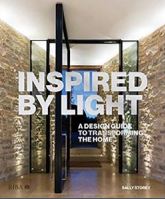Share
19.11.2015
PLDC ROME (PART 1)
Posted by Charlotte Svenson on 19 Nov 2015
At the end of October a combination of over 1700 lighting designers, architects, researchers and manufacturers from 63 countries came together for the fifth Professional Lighting Design Convention (PLDC) in Rome. The three day conference kicked off with the official opening reception at the Ergife Palace Hotel, giving attendees, exhibitors and speakers the chance to catch up with old industry friends as well as making new ones.
The motto of 2015 was ‘An Educated Decision’, which divided the conference into two parts; lighting design as an independent profession, which focused on education within the field of lighting design, and the influence of cutting edge technology on the design process.

Inspiring keynote speakers from the industry opened each session which focused on lighting application research, lighting application case studies, light + culture and professional proactive issues. With around 70 talks in total there was plenty of choice, if not too much! In amongst all of these there were four talks in particular that really stood out for me.
Neil Harbisson: The sound of colours

Neil is officially recognised as a Cyborg by the UK government. He was born colour-blind and has only ever seen in grey scale. It was this that lead him to develop the antenna (which he finally persuaded a doctor to implant into the back of his head in 2004) which allows him to perceive colour. The antenna head detects the colours of his surroundings, changing these into vibrations of differing frequencies audible in his skull. Neil is also seen as one of the world’s first cyborg artists, with works ranging from colour concert performances to the creation of sound portraits from a person’s face.
Tapio Rosenius: The lighting design practice 2020

Tapio’s talk looked towards the future of architectural lighting design practice. He takes inspiration from Bauhaus led modernism (the unity of art & technology), where his designs & innovations are led by technology, but at the same time focusing on the ‘art of light’ as the driver of the lighting design.
Tapio is the founder and design director of Lighting Design Collective, which specialises in unique designs and installations using state of the art lighting technology. Through this platform he also organises collaborative exhibitions, one of these being “Lumieres-The Play of Brilliants” which was held to great acclaim at the Elephant Paname in Paris over the spring this year. (http://www.lightingdesigninternational.com/blog/post/1022/lumires-the-play-of-brilliants)
Michael Grubb: Recycle, reduce & reuse…

Michael presented a very interesting and engaging project that he co-founded called ‘RE:LIT’. This charity project, which was started over a Friday evening pint, hits on the key issue of sustainability, a topical issue in the lighting industry.
Technology is continuously developing and designers & manufacturers often end up with superseded products that are just left to pile up in a corner of the room. RE:LIT works with suppliers and manufacturers to take these ex-samples and superseded lighting equipment, giving them a new lease of life within deserving community projects.
Klaus Obermaier: Keynote

Klaus was one of the keynotes speakers whose visually stimulating lecture captivated the whole audience. Working in the field of performing arts, music, theatre and new media, his work crosses the border between visual and performing arts; turning a stage into a digital dimension.
His works have encompassed everything from interactive moving body image projections, to three dimensional live stage dance performances where technology is used to follow the performers live on stage. I was particularly taken by the dance performance which uses D.A.V.E. (Digital Amplified Video Engine). This technology makes use of a high tech video projection which senses and works with the physical presence and sounds on the stage, following the performers and seamlessly blending all the components together to create an alternative digital reality.
In addition to the varied range of lectures, there was a more hands on side to the education in the form of 7 experience rooms. Each room explored a different facet of light.

One of the rooms explored the importance of selecting the right artificial light source. Here you were invited to help in ongoing research by trying a series of different LED light sources with a range of cosmetic foundation colours. It was interesting to look at how the tones of foundation were rendered with natural daylight compared to ‘artificial’ LED light sources.

A second room contained a series of scale models which explored the varying uses of natural daylight. A simple rectangular room was instantly transformed with the use of a single light source located in three different locations around the outside of the model. This light source represented the sun and gave you an in-site into how the various phases of the sun can change a space.
With the conference taking place bi-annually it is a highlight of the lighting industry calendar, giving us an insight into new technologies and developments in the lighting design industry while challenging our thinking. All things that are key in the making of a good designer.
If you want to know more about some the amazing speakers have a look on the PLDC website. http://www.pld-c.com/category/speakers/











